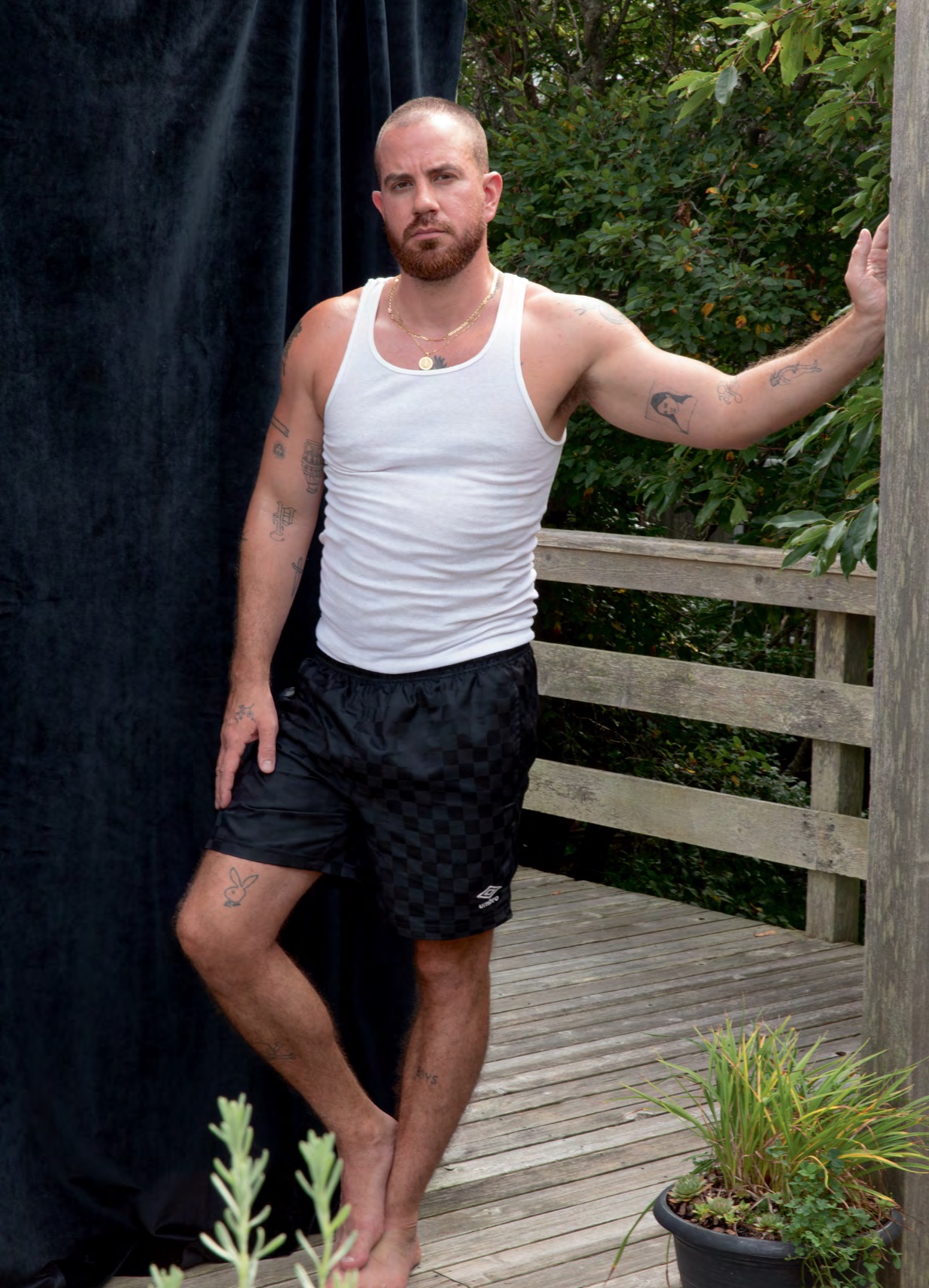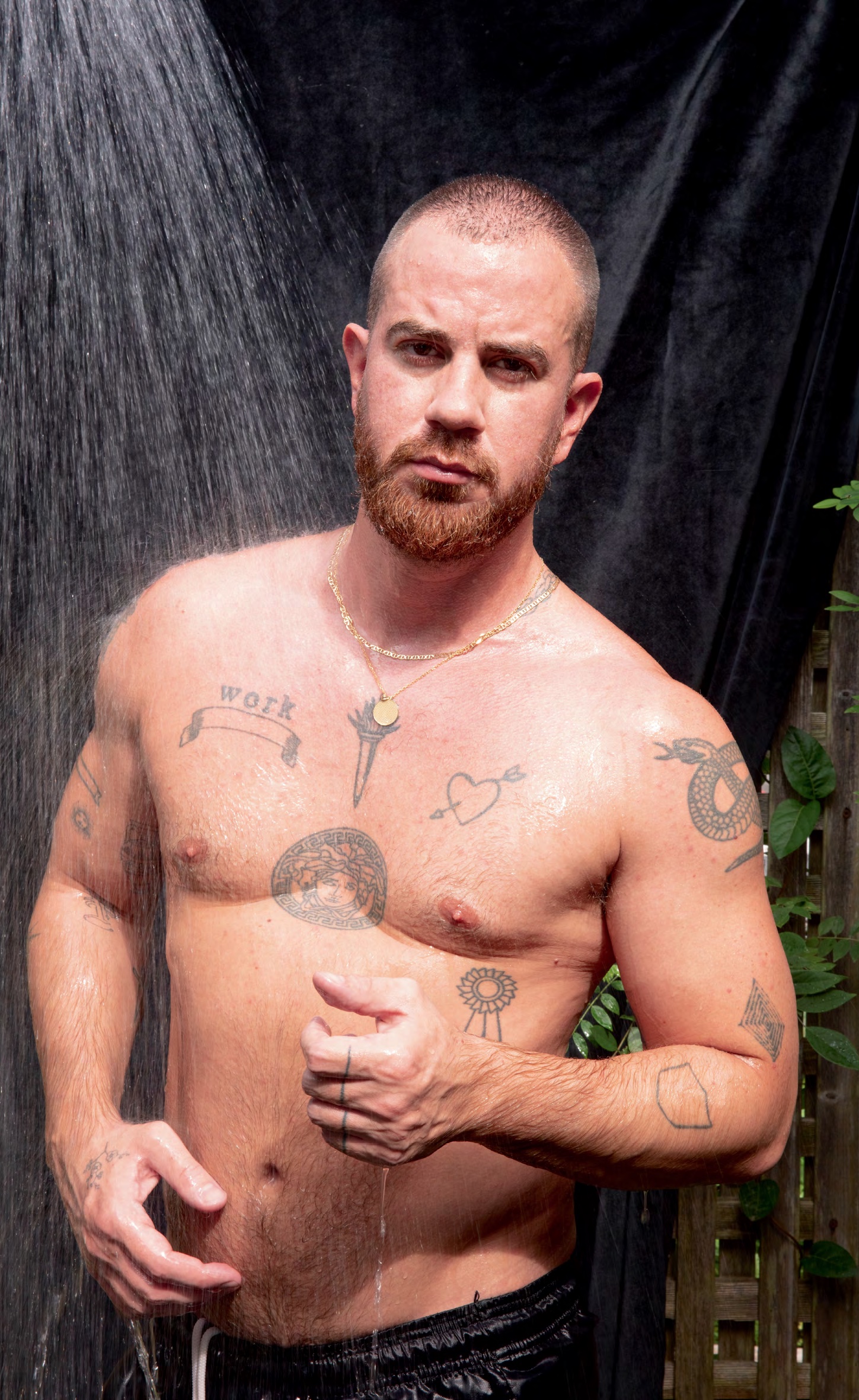PETER STAPLES
Text by Michael Bullock
Portraits by Paul Mpagi Sepuya
PIN–UP 31, 2021

It’s no coincidence that our portrait of lighting designer Peter Staples was taken in Fire Island Pines, the storied queer vacation community outside New York, located on a thin strip of sand where pine and shadblow trees grow. The Pines are an important place for him conceptually, with a considerable influence on his personal and artistic development. It is here that he has been able to experience what great design can be like when it’s not just contemplated but also used and enjoyed.
“Normally, even when you work in the design field, when you are invited to amazing spaces, you’re always on your best behavior, tip-toeing around during a photo shoot,” he observes. “But in the Pines, daily life, and most parties, take place in iconic Modernist homes that aren’t precious—they were designed to be shared. I’ve fallen in love with these spaces. The surreal, magical experiences I’ve had here are always framed by incredible architecture, and I have so many favorite moments during the summer that I take with me throughout the year.”
Savoring the delight of interiors that accompany sun-soaked beach days is an underlying aspect of Staples’s new lighting design studio, Blue Green Works, which he co-founded in 2020 (as creative director) with James McAvey. Last spring, they unveiled their debut lighting collections, Fiber and Palm. Featuring floor lights, pendants, and sconces, both series channel Staples’s take on spaces of sanctuary and retreat, but with an ease and flexibility that allows them to sit comfortably in vacation homes and primary residences alike. “I’m interested in design that stands out but can also recede into a room and play well with others,” he explains.
Before founding his own studio, 36-year-old Staples, who studied film at Columbia College in Chicago, was already a design-industry veteran, having first worked at renowned gallery The Future Perfect before becoming director of brand experience at Apparatus, the New York lighting design studio also known for its extravagant parties. During the pandemic lockdown, he honed his own vision, aiming to create what he calls a “new American vocabulary” in lighting design. From the start he had a clear understanding of the versatility a successful fixture requires. This becomes especially apparent in the Palm collection, a glamorous, butch-deco lighting system with multiple options for colored glass and smart modular design that allows for maximum customization. It’s a mix of casual elegance, instinct, and low-key pragmatism that’s also reflected in the studio’s name. “Blue Green Works just felt right. There is something about its not meaning anything that’s important to me. There is no heritage to live up to. No one owns the words ‘blue’ or ‘green’ because everyone owns them, and adding ‘works’ makes it utilitarian, like we could be making boat parts. I wanted the studio name to be open to many types of projects and feel unpretentious.”

